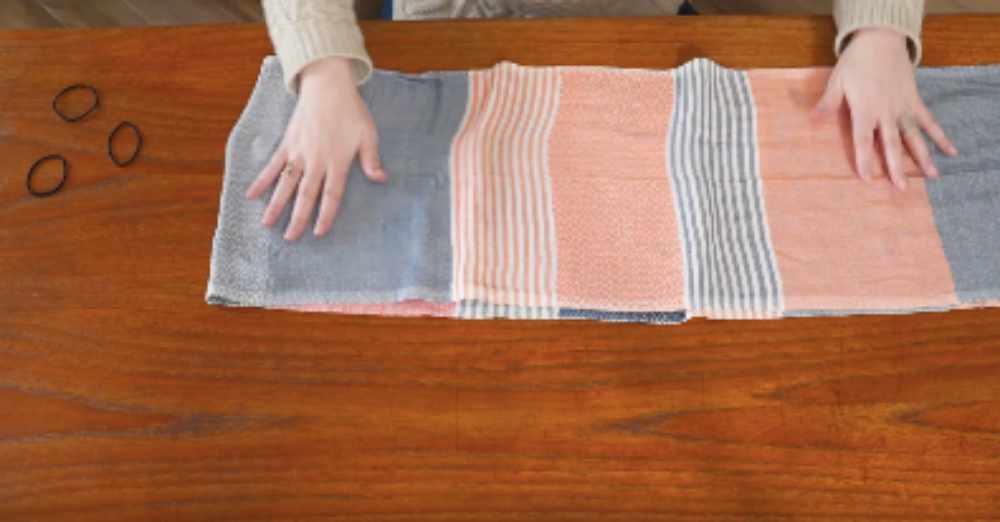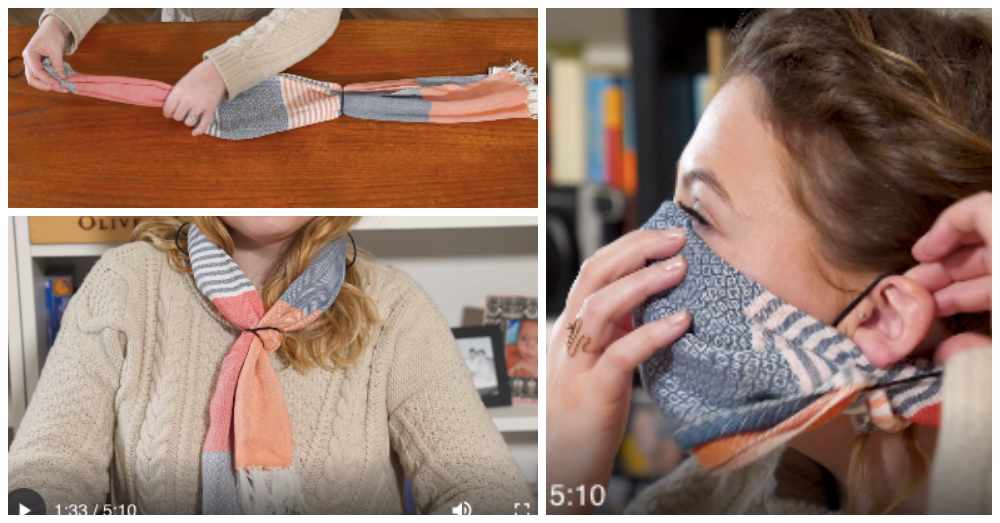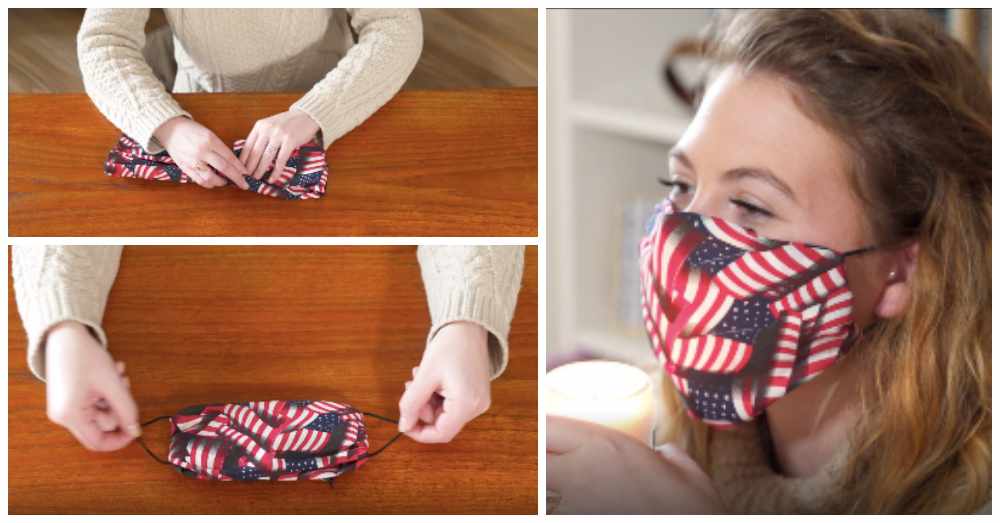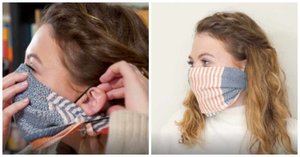As the COVID-19 pandemic sweeps across the planet, it’s important to practice social distancing as much as possible. When you have to go near others, however, as most of us must now and then, protective gear such as a face mask can help keep you from spreading your germs to others and vice versa.N-95 respirators and surgical masks are the best masks for filtering out small particles like the COVID-19 virus, but they are in short supply and are needed in hospitals and other healthcare facilities to keep patients and healthcare professionals safe from the virus. Luckily, however, there are other face mask alternatives that you can make from items you probably already have at your disposal. This way, you can protect yourself and others at least partially (and remind yourself not to touch your face) without taking valuable resources from where they’re needed. Photo: GreaterGood
Photo: GreaterGood
Please note that a homemade face mask will not make you immune to COVID-19. Face masks help keep the tiny droplets you breathe out from getting very far, but they will not filter all incoming germs. The coronavirus is a very small particle—only about 0.1 micrometers in diameter—and can get through most fabrics, so no matter what type of fabric you’re using and how many layers, you should still do your best to distance yourself from others.Some materials are better than others for filtration purposes. Ideally, the fabric you choose will have a tight weave, and you’ll be able to fold it so you have multiple layers. Some of the best fabrics for this project are flannel, heavyweight batik quilting cotton, denim, bamboo, duck cloth, silk, linen, canvas, or twill, but always check that the weave is tight so that you can’t see light through it (at least when folded). Avoid knit fabrics, as the stitches tend to be larger. You may also want to add a filter inside your mask to make it more effective. You can test the effectiveness of the material you’ve chosen by trying to blow out a candle through it. Photo: GreaterGood
Photo: GreaterGood
To create your own face mask, you may either cut and sew material into the shape of a mask using a tutorial like this one or follow our instructions for an easy no-cut no-sew face mask using a scarf. Photo: GreaterGoodAll you’ll need for your no-cut no-sew face mask is a scarf or bandana and three hair ties. You can get creative with substitutions too—if you don’t have these supplies, try using a tea towel and rubber bands or string. We’ve all got to be innovative during this difficult time when we’re supposed to stay home as much as possible.
Photo: GreaterGoodAll you’ll need for your no-cut no-sew face mask is a scarf or bandana and three hair ties. You can get creative with substitutions too—if you don’t have these supplies, try using a tea towel and rubber bands or string. We’ve all got to be innovative during this difficult time when we’re supposed to stay home as much as possible.
 Photo: GreaterGoodOnce you have your materials, watch the video below to see how to make them into a homemade face mask. You’re going to fold the scarf into a rectangle long enough to go around your head and slide two hairbands onto it. Then place the scarf around your neck with the ends in front, and put the last hair tie around the ends. Flip the scarf around and hook the first two hair ties over your ears, sliding the front of the mask up over your nose and mouth. You can pull the two ends of the scarf away from each other on the back of your neck to tighten the mask.If you’re using a bandana or a square scarf, fold it into a long rectangle as shown in the video and place hair ties one-third of the way onto each side. Fold the outside thirds of the bandana into the center, tucking one end into the other. Your hair ties should now be at the outside edges of the mask. Simply place the mask over your face and pull the hair ties over your ears.
Photo: GreaterGoodOnce you have your materials, watch the video below to see how to make them into a homemade face mask. You’re going to fold the scarf into a rectangle long enough to go around your head and slide two hairbands onto it. Then place the scarf around your neck with the ends in front, and put the last hair tie around the ends. Flip the scarf around and hook the first two hair ties over your ears, sliding the front of the mask up over your nose and mouth. You can pull the two ends of the scarf away from each other on the back of your neck to tighten the mask.If you’re using a bandana or a square scarf, fold it into a long rectangle as shown in the video and place hair ties one-third of the way onto each side. Fold the outside thirds of the bandana into the center, tucking one end into the other. Your hair ties should now be at the outside edges of the mask. Simply place the mask over your face and pull the hair ties over your ears.
 Photo: GreaterGoodThe tightness of your mask also impacts how effective it is. Make sure you tighten your mask enough so that it is still comfortable but there is very little space between the edge of the mask and your skin on the top and bottom. You want to be breathing through your mask, not around the edges. Your nose can get in the way of achieving a tight seal at the top of your mask, but you can add a pipe cleaner or wire to the inside of your mask at the top in order to be able to form the mask to the curves of your face.Check out the video to learn how to tie a scarf or bandana you already have at home into a makeshift mask to help you and everyone around you stay healthy when you’re out running errands. Be sure to wash it regularly!Proper BCS greatergood_ctg_abovevideoSource
Photo: GreaterGoodThe tightness of your mask also impacts how effective it is. Make sure you tighten your mask enough so that it is still comfortable but there is very little space between the edge of the mask and your skin on the top and bottom. You want to be breathing through your mask, not around the edges. Your nose can get in the way of achieving a tight seal at the top of your mask, but you can add a pipe cleaner or wire to the inside of your mask at the top in order to be able to form the mask to the curves of your face.Check out the video to learn how to tie a scarf or bandana you already have at home into a makeshift mask to help you and everyone around you stay healthy when you’re out running errands. Be sure to wash it regularly!Proper BCS greatergood_ctg_abovevideoSource







